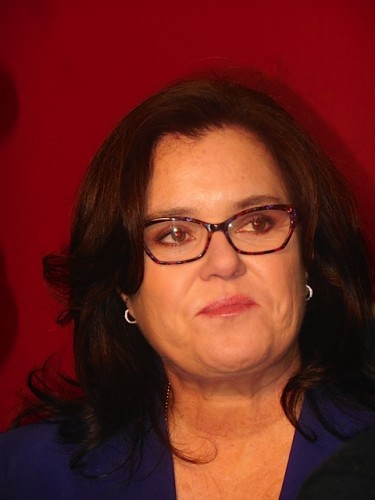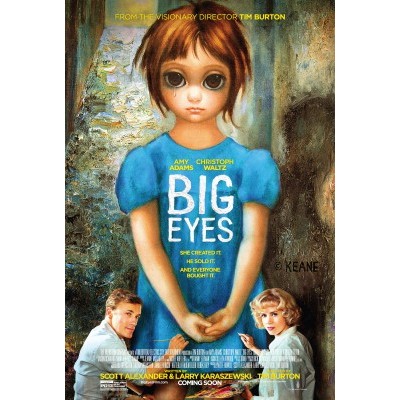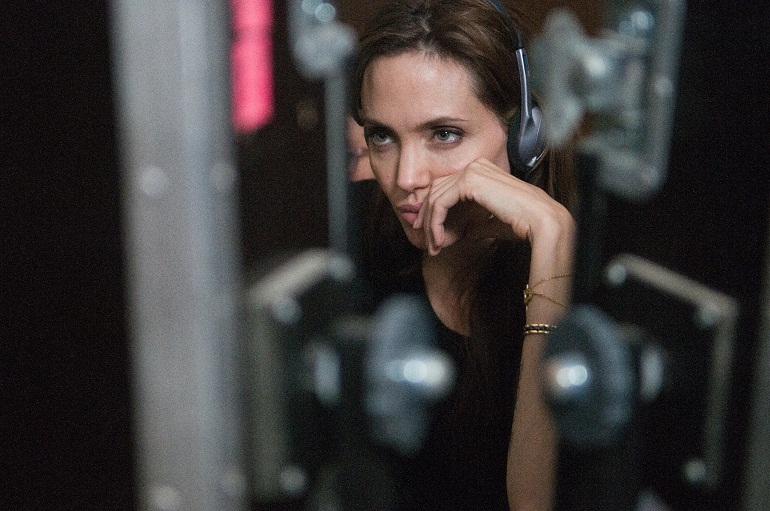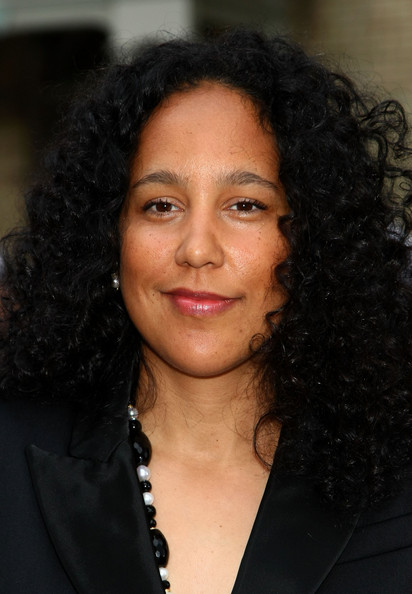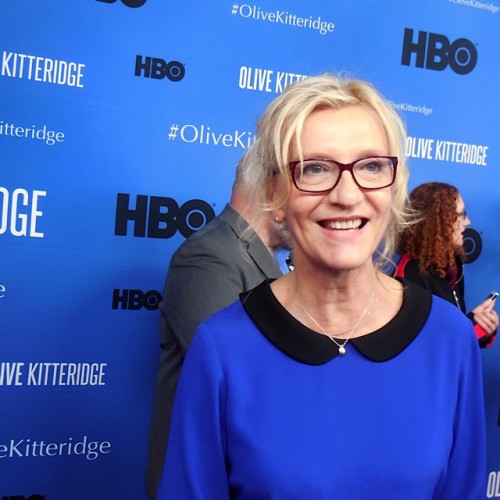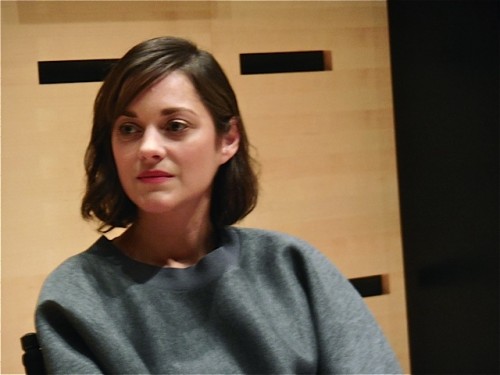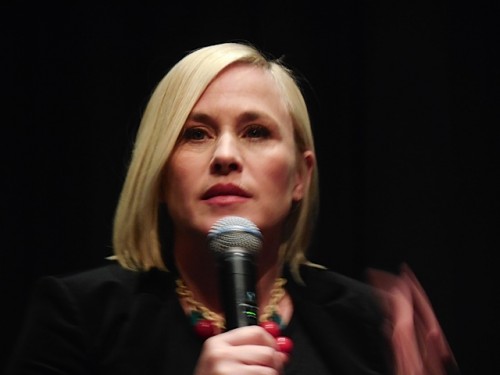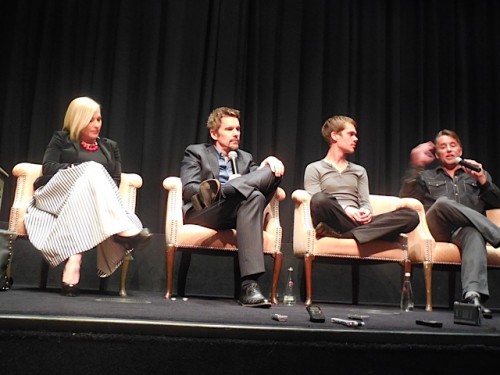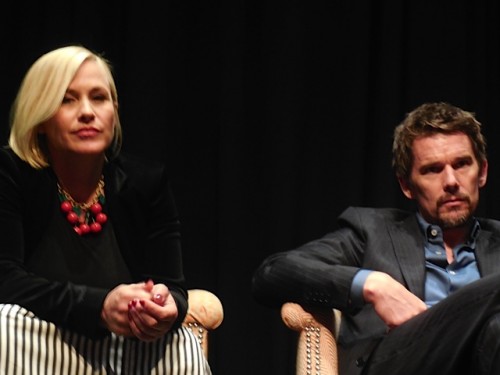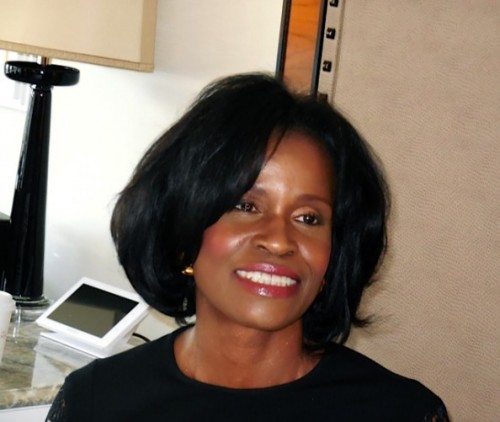
This is a guest post by Paula Schwartz.
“The movies we screen here tend to be unfiltered,” Barnard President Debora Spar told me on the red carpet of the Athena Film Festival Saturday night. “They’re powerful. They’re different voices. And we just want to provide a platform to get those voices out there.”
The Athena Film Festival, co-founded by Kathryn Kolbert and Melissa Silverstein, just ended its impressive fifth year last weekend, Feb. 5 through 8, and featured a strong slate of films, panels, documentaries and shorts focusing on female protagonists and filmmakers.
The film festival ended on a strong note with the screening of Difret, based on a true story about the abduction of a 14-year-old girl in an Ethiopian village kidnapped on her way home from school. She killed her captor after he raped and beat her, and the subsequent trial riveted the country and started a national conversation about child brides. The film, directed by Zereseney Berhane Mehari and produced by Mehret Mandefro, is executive produced by Angelina Jolie. It was Ethiopia’s submission for best film foreign Oscar and will be released in this country in March.

But back to the awards ceremony Saturday night, where Olympus Has Fallen actor Dylan McDermott–the only man on the red carpet and a member of Barnard College Board of Trustees–told me he wished there were more female directors. He noted that he made a film directed by Jodie Foster–Home for the Holidays back in 1995–and that Joanne Woodward discovered him while he was doing a workshop and later mentored him and changed his life: “She was maybe the best director I ever worked with.” He added, “I find that women directors are very different from men. Their sensitivity and their vision are a lot different. The two best directors I worked with were women.”
Athena honoree, Beyond the Lights director Gina Prince-Bythewood, told me on the red carpet she was excited about being in the company of women whose work she held in high esteem. “That definitely got me on the plane out here from L.A. to the Athena Film Festival; I’ve heard so many great things about it. Amma Asante was honored last year and we’ve become good friends during this whole awards season. And just that it’s a festival focusing on women and the importance of female filmmakers,” she noted. “There is a difference between female and male filmmakers, and it’s really about the point of view and what we focus on with our female characters, so it’s a beautiful thing to be a part of it, and I hope that honestly I can see some cool films and be inspired as well.”
The filmmaker told me her next film will focus on female friendship and the way it changes over time. “It’s a little more comedic in tone” than her previous works, referencing Beyond the Lights, which was screened later that night at the festival to a packed audience, and at which the filmmaker participated in a lively Q&A. “I love finding young voices, people that have something to say and have chops, and I think that’s my responsibility as one that’s gotten through the door to reach back and help others as well.”

I asked the filmmaker her reaction to the Oscar nominations. “There were a number of people who should have been in the conversation,” she told me. “There were no people of color nominated in any of the acting categories. I mean David (Oyelowo) obviously should have been nominated. Gugu (Mbatha-Raw), who gave two phenomenal performances (Beyond the Lights and Belle) that were 180 degrees from each other; any other actress would have been exalted after that,” she said. “The problem is the drumbeat for her happened too late. It should have happened out of Toronto, but I’m excited for what’s next for her. I just hate that she’s not in the conversation right now.”
Rosie O’Donnell generated a frenzy of media attention on the red carpet as she made her first public appearance since she announced her marital split from Michelle Rounds and her exit from The View. She attended the premiere of her documentary, Rosie O’Donnell: A Heartfelt Stand Up, and later presented the President’s Visionary Award to HBO Documentary President Sheila Nevins.
O’Donnell told journalists on the red carpet her decision to leave the popular daytime talk show, which was just announced the previous day, was a decision she made with her doctor. She suffered a heart attack in 2014, and her doctor carefully monitored her health and told her after the holidays she had an uptick in numbers that indicated an increased risk of a heart attack, possibly as a result of stress from work and her personal life.

O’Donnell cautioned that all women should take care of their health but conceded she knew she was fortunate. “It’s not everyone who can take a break from working because of stress. It’s easy for me because I’m very rich, right? So I have a lot of help. So it’s easy for people like me to talk about it. I have somebody to watch the baby if I don’t feel like it, so I have a much easier life than 99.9 percent of women on the planet and I know that. But every woman needs to take their health seriously,” she said. “I ignored it, my own. I didn’t really participate in anything besides mammograms cause my mother died of breast cancer. I was so sure it would be breast cancer that got me, so when I had a heart attack I was stunned.”
A few days earlier Jodie Foster received the Laura Ziskin Lifetime Achievement Award and was supposed to attend the awards ceremony Saturday but had to jet back to L.A. for the Director’s Guild Awards in which she received two nominations.
During the Athena awards ceremony, via video, Foster, who has been an actress since she was a child, noted that, “There I was a young girl wanting to be a director and never seeing a female director’s face. I thought it was something I would never be allowed to do.” After her mother took her to a film festival of works by Italian director Lina Wertmuller, Foster said, “I came to realize that I could be a woman director if I wanted to because there was one out there, and that was a life-changing moment for me.”

The awards ceremony, which turned out to be a great party attended primarily by women, honored Gina Prince-Bythewood, producer Cathy Schulman, and HBO Documentary Films President Sheila Nevins.
O’Donnell, who presented Sheila Nevins with her award, noted that she fell in love with documentaries from the time she saw Grey Gardens. Then subsequently she’d see documentaries on HBO and every documentary she said, “has a name and it’s Sheila Nevins. Who is this witch I thought to myself?” O’Donnell met Nevins back in 1996, “when most of you Barnard students were in elementary school.”
O’Donnell said of Nevins, “She’s the woman I look up to the most in all of showbiz. Her heart is the biggest of anyone, and she’s got a Geiger counter for truth that’s never failed.” She added that she’s done six or seven documentaries with the HBO Documentary head that does the heavy lifting. “I give her a tremendous amount of credit, and I do very little work, and that’s how I like it.”

In a speech that was basically a stand-up comedy routine, O’Donnell also joked that she saw a woman who walked by wearing a grey hat, who caught her attention. The woman sat at a front table and O’Donnell cracked, “I saw you walking by and I’m like, ‘I don’t know who she is, but she might be my next wife.’” The audience roared. O’Donnell added the feeling might not be mutual and segued into a dig at Brian Williams: “Maybe that’s the problem in my relationships. I see someone and I make shit up like Brian Williams. I escaped on 9/11 from the Twin Towers. Oh No, I didn’t. I got mixed up. F—ing Lance Armstrong liar.”
Gina Prince-Bythewood’s emotional and heartfelt speech about her journey as a filmmaker was the evening’s highlight. She spoke about being adopted by white parents and her search for her birth mother that didn’t work out as hoped. She began her journey as a filmmaker with a rejection from film school but that didn’t deter her: “I wrote a letter to the head of the school telling her she made a mistake. She called me and said I’m in.”
Bythewood credited much of her success to other women who advised and mentored her, including A Different World producer Susan Fales Hill, who presented Bythewood with her award.

Bythewood said that people asked her all the time about discrimination against Black directors. “I’ve personally not been discriminated against,” she said. “What is discriminated against are my choices, which is to focus on women and especially on women of color, their goals and their love stories and it’s a tougher fight.” A fight made especially difficult because only 4 percent of directors are women in the Directors Guild, and in the Writers Guild it is only 10 percent, “which means that our images of females that young women … are seeing is from a male point of view, and I think that that’s frightening. I think that’s dangerous and just ignores our perspective. It’s not just what happened at the Oscars,” she said. “It’s the fact also that of the films nominated for best picture not one has a female protagonist and is from a female point of view, and that has got to change. I’m in that fight.”
